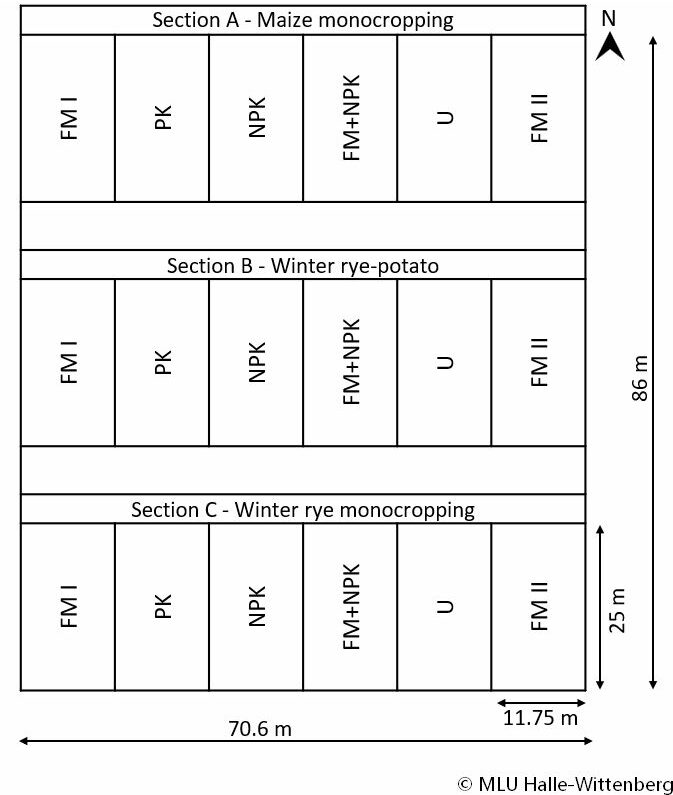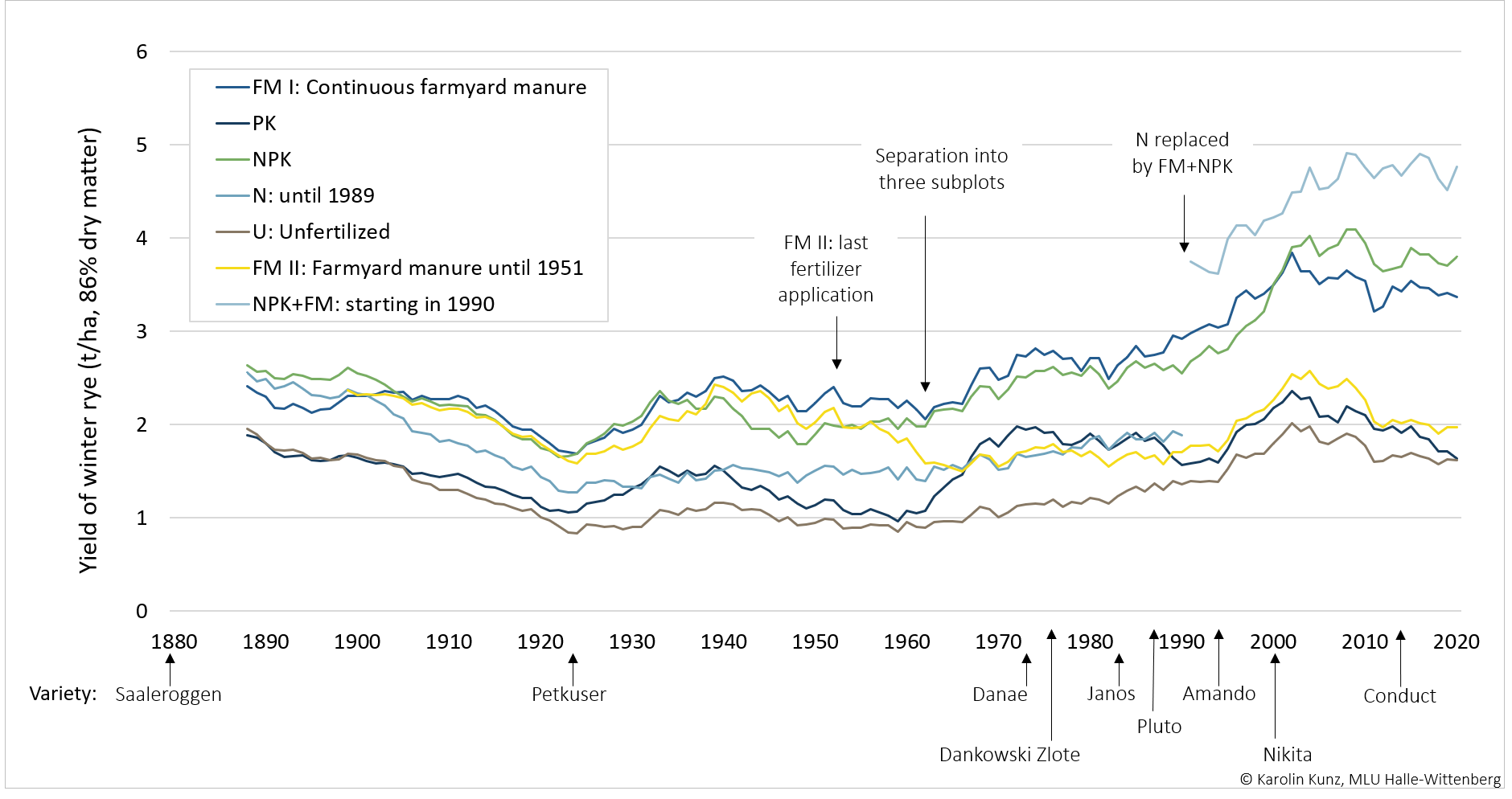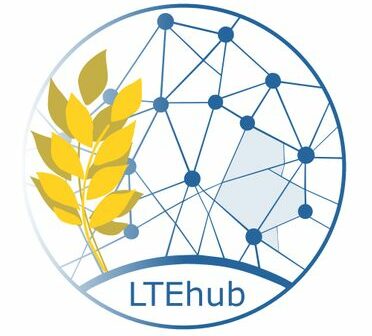Eternal Rye since 1878
The world’s second oldest still working long-term fertilization experiment was founded by Julius Kühn in 1878. The long-term fertilization trial with continuous cultivation of winter rye (‚Eternal Rye‘) focuses on the long-term effects of different fertilization on the crops and the soil fertility. More recent investigations focus on the nutrient dynamics and the stability of soil organic matter (SOM) in different fertilization and cropping systems.
In addition to the unfertilized plot (U), plots with fertilization treatments were established. Organic fertilization is done with farm yard manure (FM I and II), whereby in FM II plots the application of fertilizer was terminated as of 1952 to observe its after-effects. Mineral fertilizers were applied in combination with farmyard manure (FM+NPK) or seperately (NPK, PK).
While during the first 83 years only rye was grown, in 1961 each of the treatments was divided into three sections. In section C, winter rye monocropping was continued, in section B a crop rotation of winter rye and potato was established, and in section A winter rye was replaced by maize monocropping.
Since 2022, the Plant Reproductive Genetics group is using the Eternal Rye to understand how nutrient stress and long-term monoculture impact reproductive processes in rye populations. Through a combination of population genomics, single-cell sequencing, and high-throughput phenotyping, the group is aiming to learn more about the genetic architecture of meiosis and pollen development to further improve plant breeding methods.
The Eternal Rye trial is located in the south-west part of the Julius-Kühn-Field. Scientific head is Dr. Thomas Reitz, head of technical management is Dipl.-Ing. Bernd Look (Crop Research Unit)
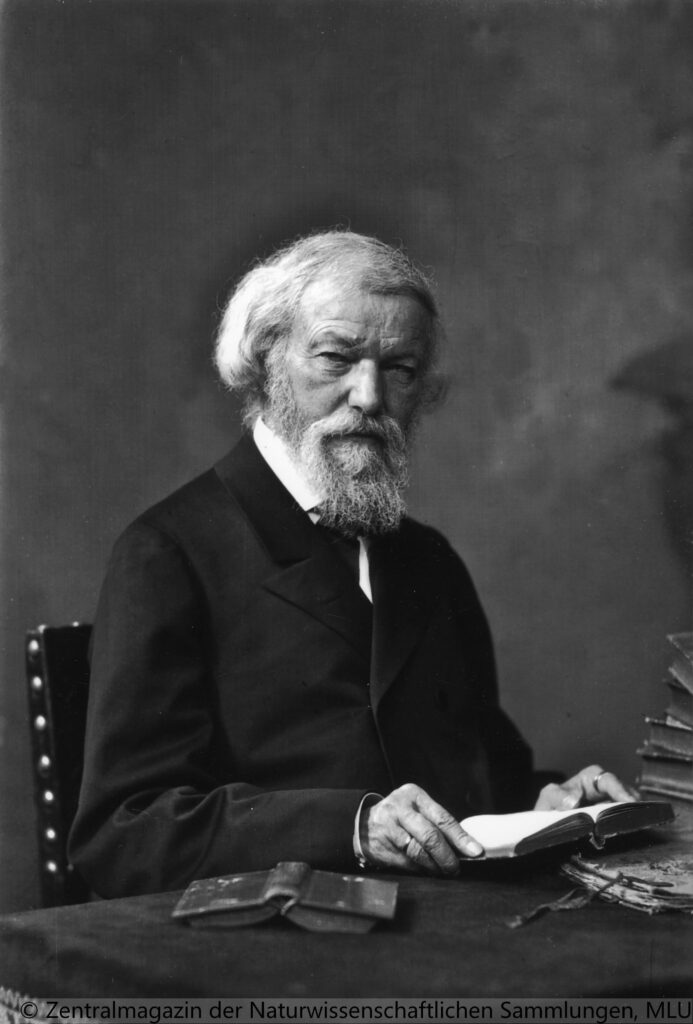
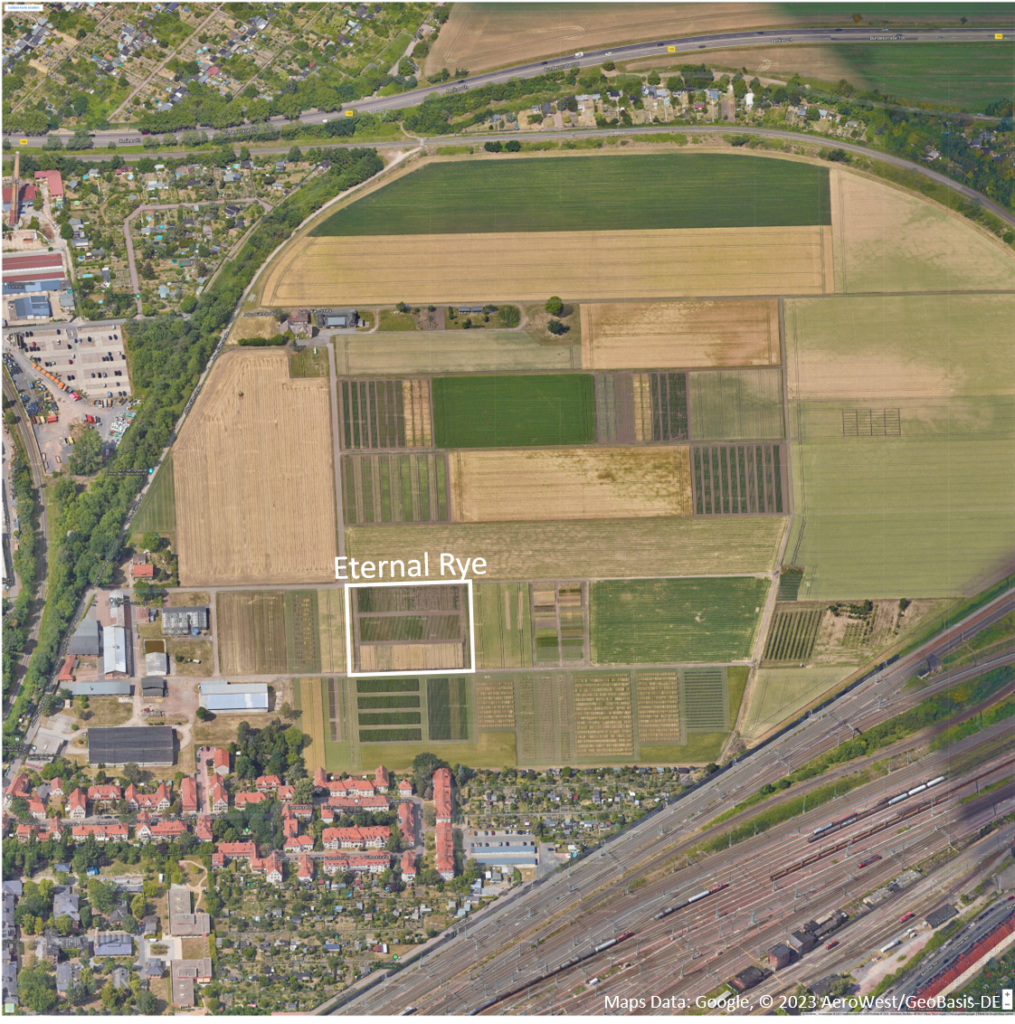
The experimental setup with three sections and six fertilization treatments:
